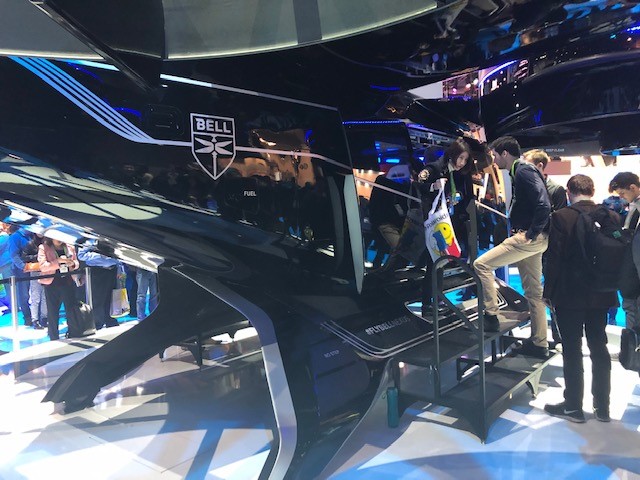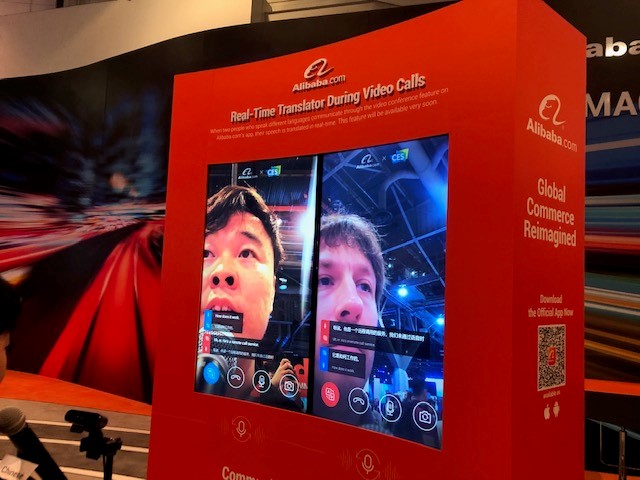CES 2019: A Preview of Life in 2022?

It's easy to get carried away by CES one fantastical object at a time. It's impossible not to gasp at 8K screens that roll up (even if no 8K content currently exists), at the Bell Copter (pictured above), the electric Harley, the toy chest of the automotive hall and the cabinet of curiosities in IoT and robotic devices.
This time though the real magic came from the interoperability of technologies that unify experience rather than from individual objects. That interoperability will be unlocked in practical terms by 5G, which will be ubiquitous by 2021-2022. Its arrival signals the beginning of the real time, zero latency era on which complex co-dependent device ecosystems from the smart home to intelligent stores and autonomous vehicles depend.
The foundational components of a fully connected and augmented life are now advancing in bandwidth, simulation and intelligence combined with cameras and sensors that interpret as well as record, and with displays that serve as multi-functional surfaces. You could see all of that at CES 2019.

Most easily, this new age might be referred as the age of assistance. Not assistance narrowly defined by "voice" interfaces alone; rather, by assistance defined as broadly distributed active, passive, timely and anticipatory responsiveness. Some of these forms of assistance will be useful but prosaic, like many Alexa skills today; but others will be genuinely life enhancing and even lifesaving.
When Facebook became a commercial entity late in the last decade, Mark Zuckerberg coined the expression "social by design." By 2021, we can expect "assisted by design" to be utterly pervasive. Sensors will keep us in the right lane. Cameras will monitor foot traffic congestion by aisle. Data embedded in packaging will assist us simultaneously in recipe planning, health advice and shopping by connecting to our health apps, refrigerators and calendars. Two years is enough time for every pack of every product, for every garment and for every service to add assisting and discoverable data. This represents a considerable opportunity for the marketer that can be simultaneously transparent and capable of personalization. For those that can't, consumer expectations may be hard to meet.
It's not possible to call the winner in the assistance race as it seems likely that devices will, as a standard, be assistant agnostic. It's hard to imagine an Alexa user buying a device that only responds to Bixby, Samsung's proprietary helper.
While full of potential the assisted, augmented life is not without societal risk.
2018 was technology's "annus horribilis" from the standpoint of damaged corporate and sector reputation arising from data breaches or platform manipulation by bad actors who threatened public safety and/or brand reputations. There was no "ethics booth" in the Las Vegas Convention Center, but there is a growing need among market participants to demonstrate strong social responsibility. This must underpin how applications of every kind are applied and connected.
The two biggest fears (beyond data security itself and exploitation by bad actors) are privacy threats and possible discrimination resulting from participating (or not) with personal data collection and sharing. Most people would be happy to pay less for healthcare and most insurers are willing to enable that, if due diligence in self-care can be proven. But not everyone will enjoy the idea of choosing between their privacy or paying the price.
Similarly, the same smart cameras keeping intersections safe and providing vital information for first responders might also provide location data to governments and others which people would prefer to keep private. Of course, large parts of the population won't have the opportunity to opt-in as access to much of the underlying technology of the assistance ecosystem will remain out of the reach of all but the most economically advantaged.
So, as another decade heads to a close we seem to be on a two-to-three-year runway to a truly connected future. More importantly we have a runway of similar length to align ethics and policy around the implications of that future.
This commentary was co-written by GroupM Global Chief Product Officer Jack Smith. @jkellonsmith
Photos courtesy of Rob Norman.
Click the social buttons above or below to share this story with your friends and colleagues.
The opinions and points of view expressed in this content are exclusively the views of the author and/or subject(s) and do not necessarily represent the views of MediaVillage.com/MyersBizNet, Inc. management or associated writers.


